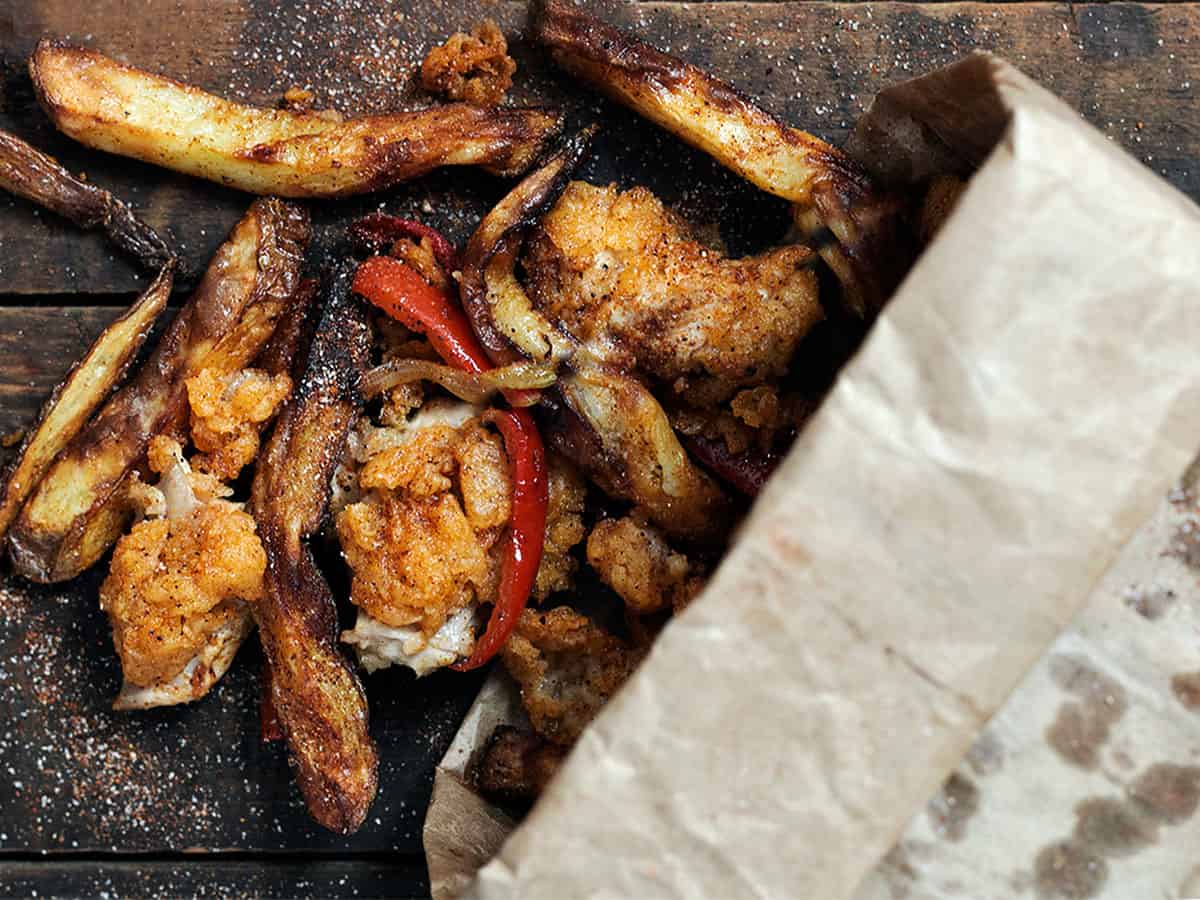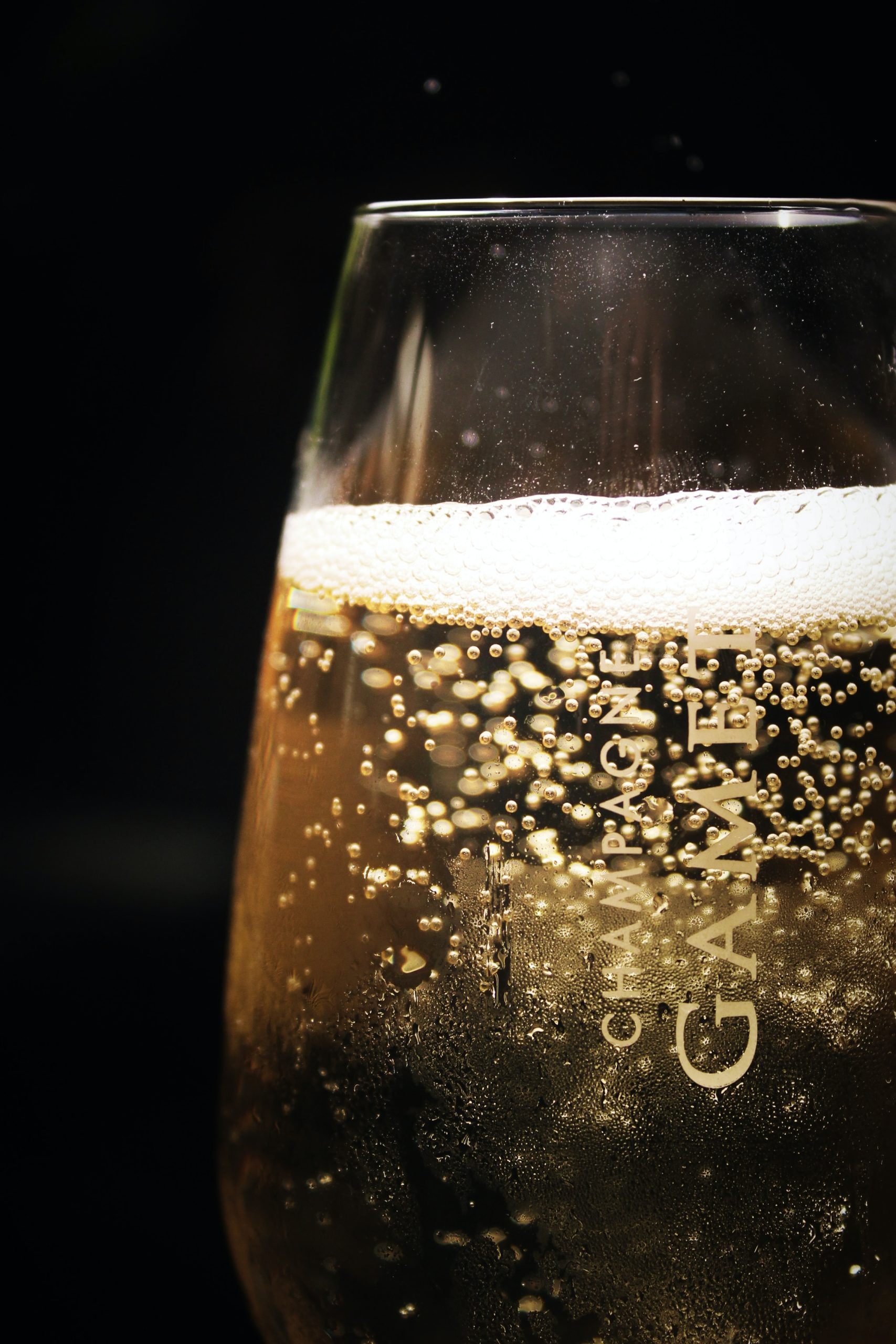Daring Pairing: Spice Box and Champagne
Words: Shamim de Brún
Images: A Glass of Bubbly, Seasons & Suppers
Food pairing can be mental. And mental is always tremendous fun. So every week, we will bring you a new off the wall match to try. This week it’s a Spice Box and Champagne.
Sounds bananas but hear me out.
The Food

Our beloved spice box is the glorious marriage of Irish and Asian culture. Just spicy enough not to alienate our timid Irish pallets. With enough punch to keep more refined pallets coming back, however begrudgingly.
The much memed takeaway consists of crispy chicken or chicken balls, chips, and a “mystery” blend of Chinese spices all shaken up in a bag, with a sauce on the side. Typically curry, but the Irish kind of-not-spicey-at-all curry. The “mystery” blend of spices is usually some mix of salt, paprika, garlic powder, onion powder, chilli powder, cayenne and ground pepper. It’s everything you loved about getting a Chinese as a child shaken up in one bag.
There is also a sweetness to the Spice Bag. This comes from the bell peppers. Bell peppers are also known as “sweet peppers” because they are the sweetest of all the pepper family, known as Capsicum. In fact, they are the only Capsicum that doesn’t produce capsaicin. Capsaicin is the chemical in peppers that causes spiciness.
The Drink

There are as many different kinds of Champagne as there are people. In general, however, Champagne is fizzy, bright and goes with everything. Many different kinds of Champagne run the gamut from sweet to dry around by young and lively and down the long stretch to vintage Cristal and Dom Perignon. What they all have in common, though, is that they come from this tiny stretch of France and are fizzy as fudge. Champagne seduces everyone with its fruity and toasty flavours.
Champagne is a happy drink that elevates any occasion and experience. The simple act of opening the bottle and hearing the soft pop never fails to bring a smile to people’s faces. Oscar Wilde had it right when he said, “only the unimaginative can fail to find a reason for drinking champagne.” A night in with a Chinese is enough of a reason as any other.
You can also sub in any sparkling wine made in the “classic method”. That includes Cava and Cremant but not Prosecco. While Prosecco has its merits mostly, it’s injected with fizz, whereas any sparklers made in the classic method have a natural fizz.
Why it works

The most straightforward choice for all Chinese food genuinely is Champagne — I’m not making this up. Though their invention occurred on near-opposite sides of the globe, Champagne and Chinese food are the kind of best friends who’ve known each other all their lives and somehow still actually like each other.
There are two primary reasons that Champagne goes well with Chinese food—the first being bubbles. The bubbles in Champagne—and any sparkling wine or even seltzer—scrape and refresh your mouth with every sip. So when we’re talking about greasy foods that leave a spice residue on the tongue, the Champagne will cleanse them.
The second reason is the acidity of Champagne. Acidity in wine helps cut through fatty textures and balance sweet flavours. Many Chinese dishes, including the Spice Bag, have sweet and savoury flavours. A wine with high acidity is needed to brighten and contrast each. Together they make a Complementary Pairing because the layered intricacy of the drink enhances the shaken up complexity of the dish.
The Blow Back
If you’re one of the people screaming at me right now that this is “wasting” Champagne; let me assure you, Champagne is never wasted unless it’s in a mimosa. For that, you should use prosecco. For this, I would love to see people buy a case of half-bottles of Champagne some bendy straws and put them out on the table with a mega box. But, then, just let everybody have at it.
Try it:
Champagne: Comte de Senneval from €19.99 at Lidl. Exquisite Crémant D’Alsace from €12.95 at Aldi. Laherte-Freres Rosé de Meunier Extra Brut from €58.95 at Mitchell and Son
Spice Box: stick to your favourite. Nothing is worse than cheating on your favourite Chinese and being let down





